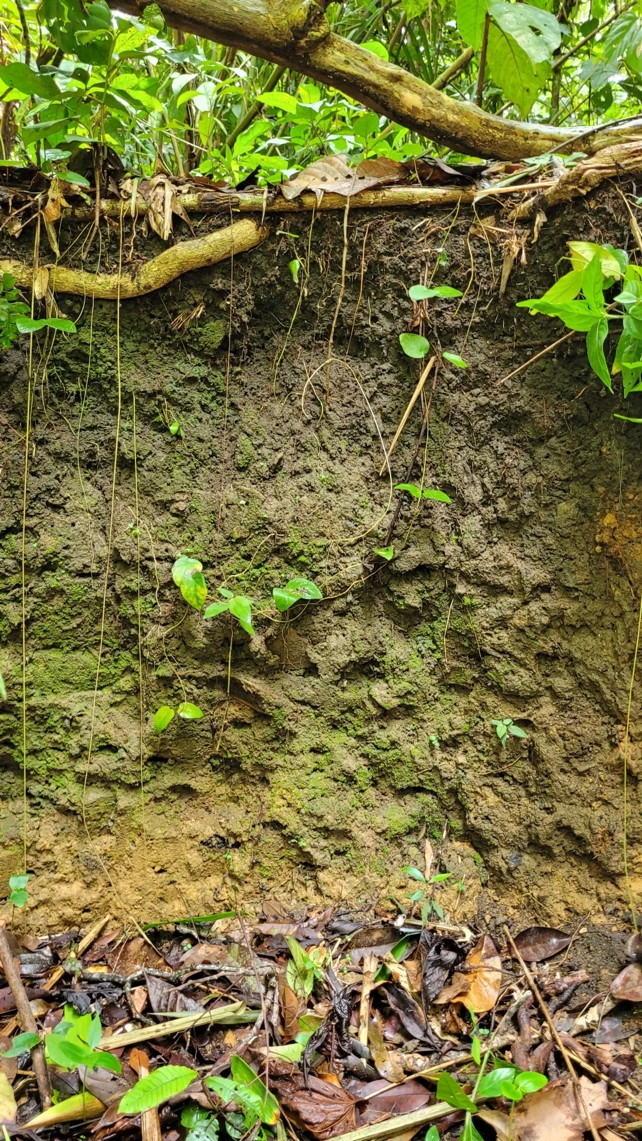The Amazon rainforest is on the brink of a catastrophic collapse from which you may never come back.
The traditional knowledge that once helped nurture this precious ecosystem can now help it recover, according to new research from researchers from the University of São Paulo, the Brazilian Agricultural Research Corporation, and the National Amazonian Research Institute in Brazil.
Roughly 2,000 to 2,500 years ago, the Amazonian people known today as Amerindians took over a nutrient-poor land and Enrich it with manure, charcoal, bones, clay and compostcreating a fertile black soil called “Amazonian Dark Earth” (ADE).
Today, dark earth soils nourish riverbanks and other regions of the Amazon with minerals such as magnesium, zinc, phosphorous, and calcium, Provide the ideal habitat for microorganisms. Beneficial for plant health and growth, which is why the indigenous people of the Amazon have it Food grown in dark soil for centuries.

Finally, the scientific establishment pays attention to that deep local knowledge.
A group of experiments on dark earth in the Amazon suggests that these ancient soils can dramatically improve an ecosystem’s transition from grassland to rainforest. The scientists behind the new research hope their findings can be used to accelerate ecological restoration projects in the Amazon region today.
“ADE has taken thousands of years to accumulate and would take an equal amount of time to regenerate in nature if used.” He says Molecular biologist Siu Mui Tsai of the University of São Paulo.
“Our recommendations are not to use ADE itself, but rather to replicate its properties, particularly the microorganisms, for use in future ecological restoration projects.”
In pots with control soil, 20 percent ADE and 80 percent control soil, or 100 percent ADE, the researchers grew the weeds before cutting them, leaving only their roots. Then they planted the seeds of three types of trees and watched them grow for 90 days.
At the start of the experiments, the dark soil was less acidic and included more sand and silt than the control soil. They also contain 30 times more phosphorus, 6 times more calcium, 5 times more zinc, and 4 times more iron, carbon and copper.
After the potted plants have had time to grow, the soil has been depleted of some of its nutrients. But the pots with the dark earth were still much richer in minerals than the control soil.
Much of the deforestation currently occurring in the Amazon region is due to Make way for cattle grazing. But these grasslands are being created at the expense of an irreplaceable ecosystem that stores vast amounts of carbon and supports an enormous diversity of life forms.
Dark Earth soils could go a long way toward restoring those lost habitats, even in a warming world. A soil mixture containing only 20 percent dark soil was most beneficial for tree growth in a temperature-controlled greenhouse. In fact, a small dose of native ADE mixed with degraded soil provided nearly 100 percent plant growth potential of ADE alone under an average temperature of 34 °C.
The microbial community hosted in the darker soils was also more diverse compared to the communities with more degraded soils.
Microbes convert soil chemical molecules into nutrients that plants can absorb. Explain University of São Paulo molecular biologist and joint lead author Anderson Santos de Freitas.
“Our data showed that [Amazonian dark earth] It contains microorganisms that are better at this soil transformation, thus providing more resources for plant development. “
In the experiments, for example, weeds grew 3.4 times thicker in soil containing 20 percent ADE and 8 times thicker in pure ADE soil than in controls.
Some trees also grew three to six times taller when planted in soil containing ADE. Primary, or colonial, species Ambay Pumpwood (Cecropia pachystachya) It will not grow even if it does not have access to ADE and its important minerals.
Without ADE, the findings suggest that some trees in the Amazon might not take root at all.
Dark soil may be the key to their recovery.
The study has been published in Frontiers in soil science.

“Beer aficionado. Gamer. Alcohol fanatic. Evil food trailblazer. Avid bacon maven.”
